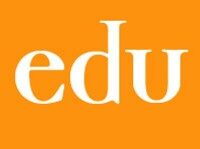This post first appeared on Edutopia.
Too often, conversations about digital portfolios center on the tools: how to save, share, and publish student work. Mastering the technical component of digital portfolios is critical, and students do need an opportunity to showcase their work to a broader audience. However, when we let the process of curate > reflect > publish serve as the sole focal point, digital portfolios become summative in nature and are viewed as an add-on at the end of a unit, project, or activity.
For digital portfolios to be truly valuable to both teachers and students, they need to provide insight into not only what students created, but also how and why. If the ultimate goal is to develop students as learners, then they need an opportunity for making connections to content as well as the overarching learning objectives.
Progress and Performance Portfolios
Through the act of collecting learning artifacts and compiling them into portfolios, students should have an opportunity to reflect upon their experiences and see their own growth. In his book, Matt Renwick discusses the need for both progress and performance portfolios:
By capturing student learning progress and performance in the moment, using digital tools, we can bring learning to life. (p.123)
Artists and writers often keep a portfolio to reflect upon their work. Leonardo DaVinci kept hundreds of notebooks documenting his thinking in notes, diagrams, and sketches. John Updike left behind thousands of documents illustrating how he rewrote paragraphs and solved technical challenges. In a similar manner, students could curate a body of work that represents their progress as well as their performance to show their thinking throughout their learning experiences.
In her high school science classes, Jodie Deinhammer has her students keep portfolios so that they have a place to share their learning as well as an opportunity to reflect on how class content directly pertains to their personal lives. (Here are a few examples.) These portfolios provide her with an opportunity to observe her students' individual growth and how they make connections to previous content. Because reflection and documentation of progress have become part of the class learning culture, Jodie's students recognize from the outset that they need to capture not only what they learn but also how. Her students' reflections become a vehicle for formative assessment and deeper exploration. Jodie can see their comprehension and understanding as well as how they connect content to their personal lives and experiences.
>> Read the full article on Edutopia.


